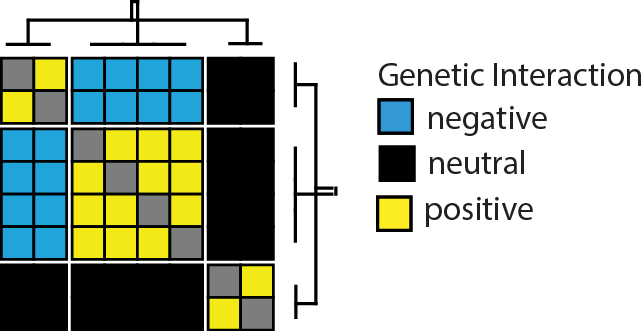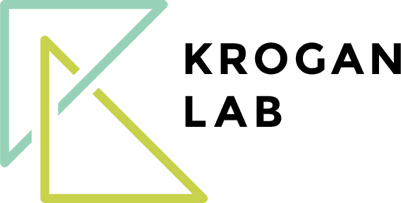 Genetic interaction (GI) mapping, pioneered in the early 2000s, is a powerful technique to systematically reveal functional relationships between genes, which often also reveal the presence of a physical interaction. GI mapping involves the pairwise perturbation of genes (e.g. knockout, knockdown or overexpression) in order to elucidate how one gene modulates the phenotype of the other. Typically, cell viability is used as the phenotypic readout, where GIs that increase cellular fitness are said to be “positive” and GIs that decrease cellular fitness are said to be “negative”.
Genetic interaction (GI) mapping, pioneered in the early 2000s, is a powerful technique to systematically reveal functional relationships between genes, which often also reveal the presence of a physical interaction. GI mapping involves the pairwise perturbation of genes (e.g. knockout, knockdown or overexpression) in order to elucidate how one gene modulates the phenotype of the other. Typically, cell viability is used as the phenotypic readout, where GIs that increase cellular fitness are said to be “positive” and GIs that decrease cellular fitness are said to be “negative”.
GI mapping is often used to uncover new functions of genes, enabling a hierarchical organization of gene products into functional complexes and pathways, and to identify synthetic-lethal interactions with relevance to cancer combination therapy. The presence of a functional (i.e. genetic) interaction often indicates a physical (i.e. protein-protein) interaction, and vice versa, highlighting the synergy between combined GI and protein-protein interaction (PPI) mapping initiatives.
The Krogan lab is doing GI mapping both in yeast for more basic biological research, as well as in mammalian cells for more disease-directed reserach.
